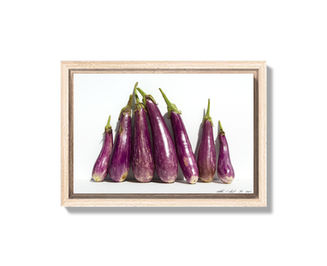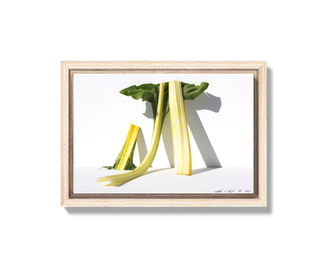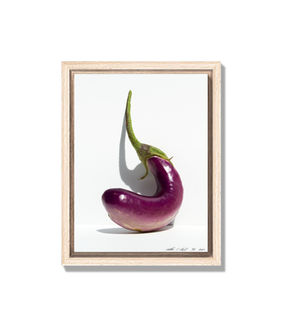Organic
Walk the aisles of any grocery store’s produce section and you cannot help but be inundated by the kaleidoscopic colors of the perfectly shaped fruits and vegetables that line the walls. Unblemished, they have come to be expected in a world of mechanized farming and the desire for picture perfect exteriors with little concern for the inner beauty. “Organic” by Thomas Card posits that the true value of food is more complicated than the surface appearance of these pristinely pruned baskets. Straight from the Earth, raw, broken, and unmodified, the gnarly garden vegetables are the celebrated stars “Organic” in their natural flawed perfection. “Organic” becomes a case study at the intersection of painterly still life and classical portraiture. Removed from the intricately arranged bowls of the still life genre, and even any form of traditional table setting that is, Card orchestrates each composition so that these vegetables begin to anthropomorphize. They appear to embody the poses of classical models, outstretched and contorted, revealing new facets of the dynamic shapes. The often discarded nature of these marred vegetables is upended by Card’s whimsical yet intimate approach as they take on forms that resemble the human body at its peak of idealized beauty. In this contemporary twist on our understanding of fruits, portraiture, and even our own consumption, Card displays each vegetable with intense clarity atop a white background. In his own take on Avedon’s white seamless, he creates his own miniature tabletop to place each vegetable upon. Once arranged, he allows the natural light, incorporating the energy of the sun that grew these plants into his work, to bathe his subjects. While small prints, the vegetables consume the frame bombarding us with their variations in color, asymmetries, their bumps, bruises, and lumps. At this moment, these vegetables, which would otherwise be dismissed, take on an unencumbered beauty in their raw authentic form. This familiar subject matter illuminates an unexpected dialog about how each of us relates to our consumption of food but also our perception of our own flaws.















